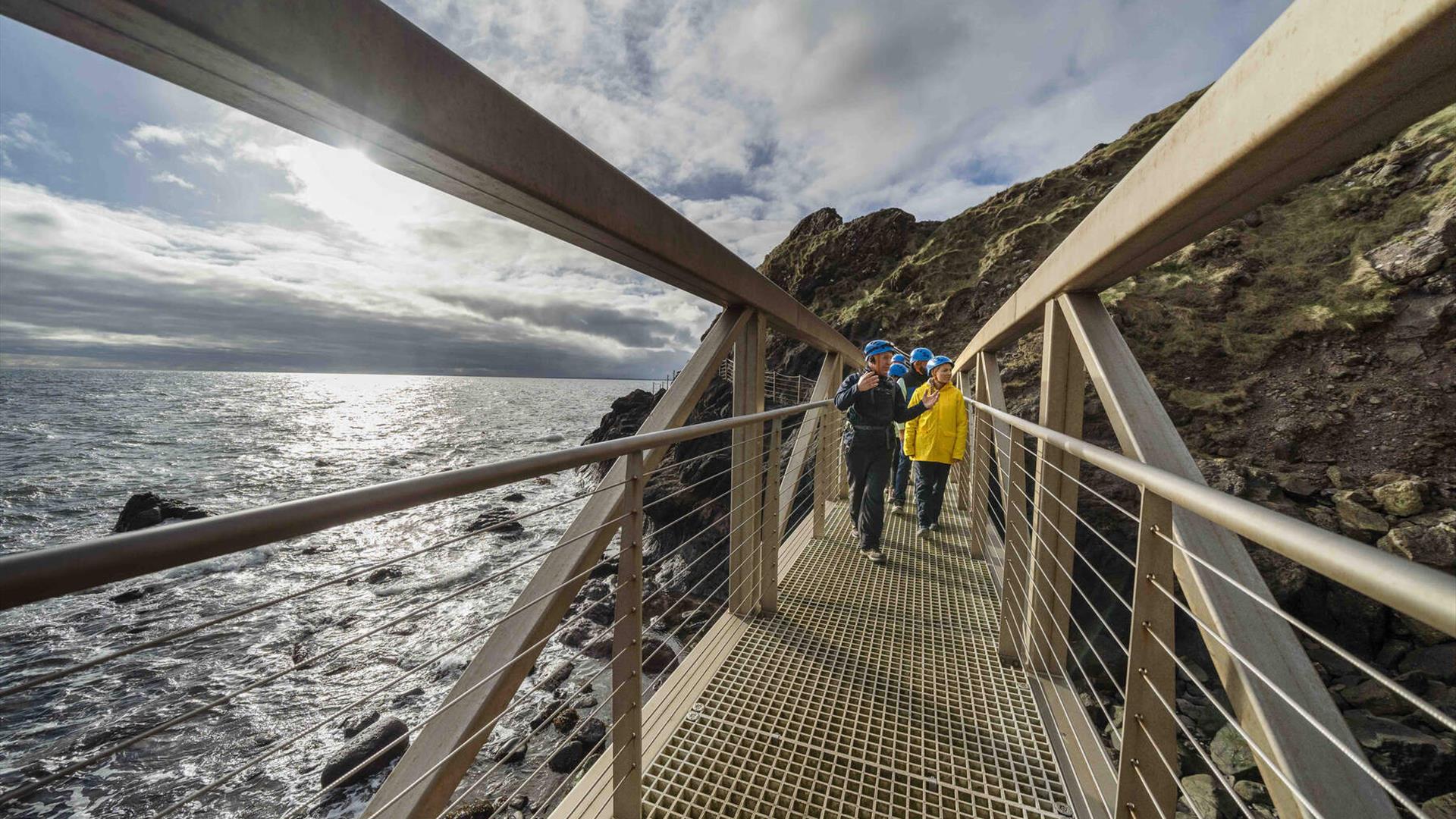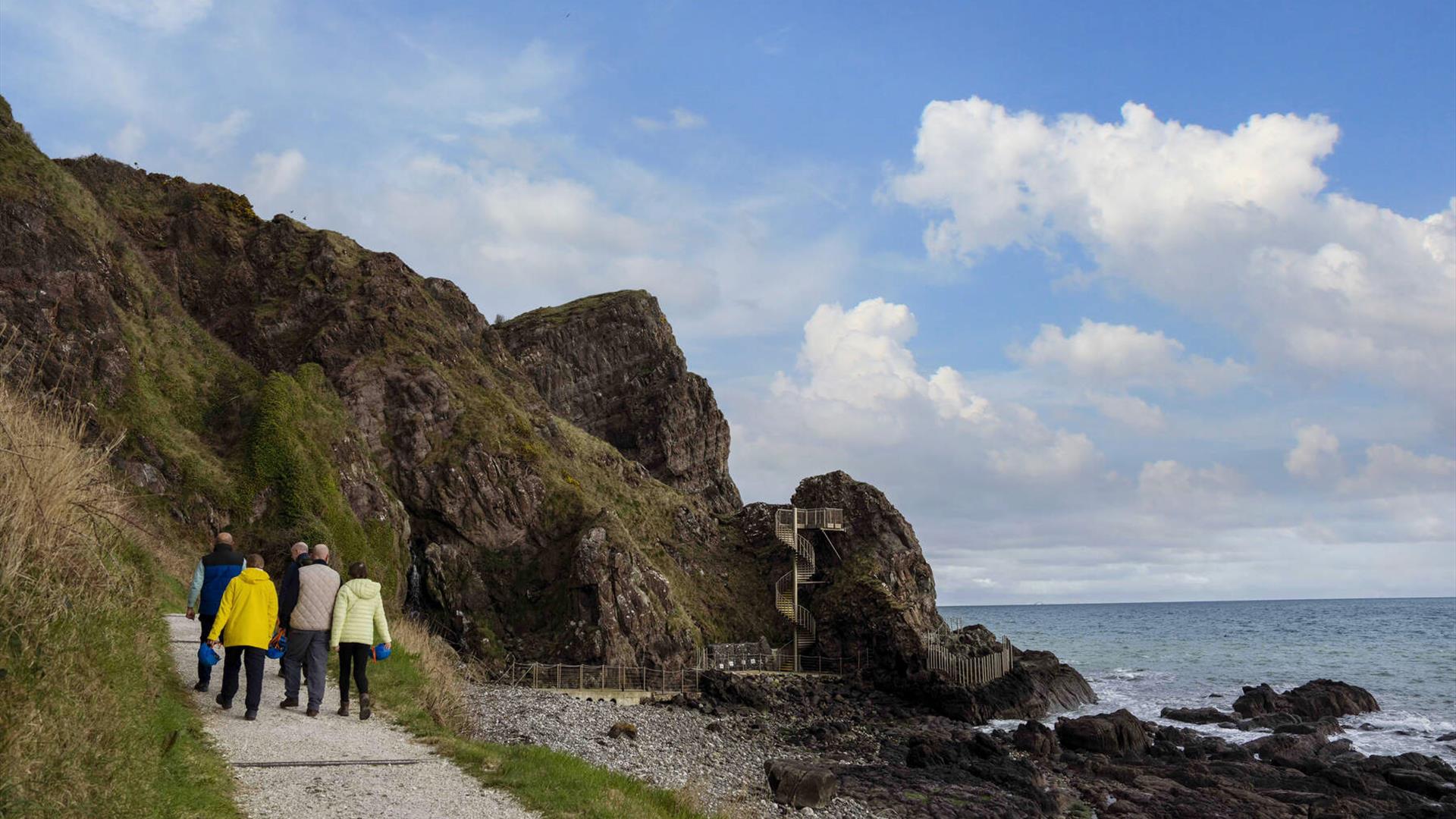Book Tickets Online
About
On the thrilling Gobbins Experience, nature isn’t content to just sit back and be admired. It completely engulfs you: from the all-enveloping Irish Sea winds and the dolphins dancing off the coastline, to the squawking native sea birds and the salty air as it hits your lips.
When this cliff path was first constructed in Islandmagee, on the County Antrim coastline at the turn of the 20th century (the crowning glory of the Victorian railway engineer Berkeley Deane Wise), it was billed as having “no parallel in Europe as a marine cliff walk”. Arriving at The Gobbins and seeing for yourself how this network of walkways and bridges hug the dramatic basalt cliff face, that strapline remains true to this day. In recent years more of the walk has been restored to make it even more enjoyable. Local guides, proud of this spectacular place, join you as you lace up your walking boots and don a hard hat for the three hour guided walking tour.
Your journey begins via a hole through a rock called Wise’s Eye. As waves crash below you, you make your way along narrow paths, up steps carved into the cliff face, and through tunnels hidden under the sea. Your guide shares geological and geographical information, and points out plants, ferns, grasses and wildlife in this Area of Special Scientific Interest. Depending on the season, you could be lucky to spot puffins digging burrows to lay eggs, cormorants diving for fish, or dolphins swimming in the surf below. This is nature in its purest form: exciting, elemental and ever-changing.
There are plenty of stories, too. You’ll hear how nearby Portmuck – or Pig Island – got its name. You’ll learn about local smugglers, who used the natural cave system to stash items such as salt, and how they managed to avoid getting caught by the so-called ‘High-tiders’ (the Coastguard). All the while, as you listen, nature is trying its hardest to win your attention: waves crash excitedly below your feet, and sea birds cry out.
On The Gobbins Experience, the history is just as captivating as the natural habitat.




















